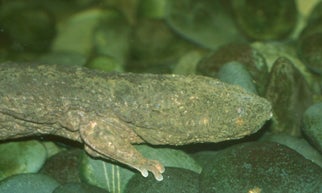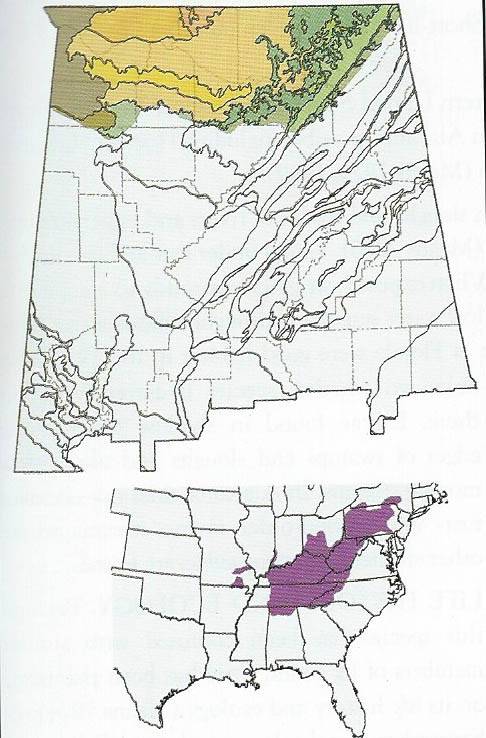Eastern Hellbender Status Survey
SCIENTIFIC NAME:
Cryptobranchus alleganiensis alleganiensis
OTHER NAMES:
Mudpuppy, Mud-dog, Waterdog, Devil Dog, Allegheny Alligator.
STATUS:
Rare and possibly endangered in Interior Plateau and adjacent Southwestern Appalachians in Tennessee River drainage. Near extirpation, now confined to a few free-flowing Tennessee River tributaries. HIGHEST CONSERVATION CONCERN.
DESCRIPTION:
The Eastern hellbender is a large, totally aquatic salamander (20-74 cm [12-29 in] long). Adult females tend to be larger than males. The head and body are flattened, dorso-ventrally. The tail is long and flattened from side to side, with a distinct keel.
Hellbenders have four short, but well developed legs. Each foreleg has four toes while the hind legs have five toes each. The toes of a hellbender end in a rough pad that aids in traction as it moves along stream bottoms. Loose skin folds extend along each side between the front and hind leg. The folds of skin are used in respiration; capillaries in the folds diffuse oxygen into the blood.
Larval hellbenders have external gills. At approximately 18 months of age, larval hellbenders go through a complete metamorphosis, at which time they lose their gills. Adult hellbenders usually retain a single pair of external gill openings on either side of the neck. Hellbenders have very small eyes located on the top of the head that can detect light but are not very good for forming images.
Coloration typically varies from brown to grayish overlaid by irregularly shaped dark blotches. Some individuals have brownish to yellow-orange blotches.The belly area is typically lighter in color, with few markings.
DISTRIBUTION:
Southern New York to northern Georgia and Alabama, and extending westward through southern Ohio to southern Illinois, western Kentucky and Tennessee and northeastern Mississippi. Disjointed populations of hellbenders also occur in Missouri and northern Arkansas. Hellbenders found in these areas represent a distinct subspecies, the Ozark Hellbender (C. a. bishopi). In Alabama, the Eastern Hellbender (C. a. alleganiensis) is restricted to the Tennessee River drainage system.







